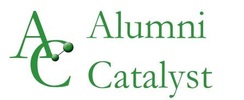This post was originally made on Evertrue's blog.
The story of Disney’s infamous Super Bowl campaign has become marketing folklore at this point. When Michael Eisner took over as CEO of the Disney Company, he and his wife were having dinner with Dick Rutan and Jeana Yeager, who had just piloted the first plane to fly around the world without stopping or refueling.
As told in Eisner’s book, Work in Progress, when asked what they were going to do next, the pilots replied, “Well, we’re going to Disneyland!” After the dinner, Jane Eisner remarked to Michael that the phrase could make for a great marketing campaign. In 1987, New York Giants quarterback Phil Simms starred in the first such Disney Super Bowl commercial. The famous ad spot has now been running for almost 30 years, featuring a variety of celebrities.
The story of Disney’s infamous Super Bowl campaign has become marketing folklore at this point. When Michael Eisner took over as CEO of the Disney Company, he and his wife were having dinner with Dick Rutan and Jeana Yeager, who had just piloted the first plane to fly around the world without stopping or refueling.
As told in Eisner’s book, Work in Progress, when asked what they were going to do next, the pilots replied, “Well, we’re going to Disneyland!” After the dinner, Jane Eisner remarked to Michael that the phrase could make for a great marketing campaign. In 1987, New York Giants quarterback Phil Simms starred in the first such Disney Super Bowl commercial. The famous ad spot has now been running for almost 30 years, featuring a variety of celebrities.
The two main marketing techniques used in this ad campaign are as follows:
In marketing, triggers are an important concept. A brand wants its customers to remember that, “I should give my wife a new Kay bracelet charm for every anniversary” or “Southwest flights always go on sale six months before the date of the flight.” This makes customer activity more reliable, helps level out sales, and makes forecasts more predictable.
Nonprofits and higher-ed institutions don’t have the budget for a Super Bowl commercial. But there are still highly effective ways to align your brand with the right message by using triggers. Here are a few examples of activities and campaigns that contribute to the brand positioning of a school.
The University of Western Australia (UWA)’s Luminous Night Ceremony
UWA is one of the top 10 schools in all of Australia. According to its website, the school was “conceived as a park with buildings” and is very well known for its sculptures, murals, gardens, and theatres all throughout campus.
When the university reached its 100th anniversary—and was also ranked as one of the top 100 universities in the world—it found a way to celebrate the anniversary while also positioning itself as a leader in the Perth arts and culture scene. UWA created an outdoor event called Luminous Night, which featured projections of beautiful moving art on the side of one of the school’s most iconic buildings, Winthrop Hall, and told the story of the university’s history.
When planning large-scale events like reunions and campaign launches, focusing on exactly how you position your institution’s brand can lead to creating memorable, compelling moments, like Luminous Night.
- It leverages a high-profile annual event (the Super Bowl) that millions of people across all demographics, backgrounds, and regions pay attention to.
- It aligns the Disneyworld/Disneyland brand with the importance of celebrating milestone events. By showcasing that the first thing a professional athlete wants to do after reaching the pinnacle of his or her career is go to Disneyland, it sends the message that whenever we are celebrating a big occasion—whether that be an anniversary, 50thbirthday, or retirement—we should consider going to Disneyworld.
In marketing, triggers are an important concept. A brand wants its customers to remember that, “I should give my wife a new Kay bracelet charm for every anniversary” or “Southwest flights always go on sale six months before the date of the flight.” This makes customer activity more reliable, helps level out sales, and makes forecasts more predictable.
Nonprofits and higher-ed institutions don’t have the budget for a Super Bowl commercial. But there are still highly effective ways to align your brand with the right message by using triggers. Here are a few examples of activities and campaigns that contribute to the brand positioning of a school.
The University of Western Australia (UWA)’s Luminous Night Ceremony
UWA is one of the top 10 schools in all of Australia. According to its website, the school was “conceived as a park with buildings” and is very well known for its sculptures, murals, gardens, and theatres all throughout campus.
When the university reached its 100th anniversary—and was also ranked as one of the top 100 universities in the world—it found a way to celebrate the anniversary while also positioning itself as a leader in the Perth arts and culture scene. UWA created an outdoor event called Luminous Night, which featured projections of beautiful moving art on the side of one of the school’s most iconic buildings, Winthrop Hall, and told the story of the university’s history.
When planning large-scale events like reunions and campaign launches, focusing on exactly how you position your institution’s brand can lead to creating memorable, compelling moments, like Luminous Night.
The University of Kansas (KU)’s Birthday Video Campaign
It's important to have accurate alumni data at any institution. Not only does having good data ensure that you can connect with alumni via mail or email, but it can also contribute to an active alumni network. However, since many alumni forget to keep this information updated (especially when they’re not currently in job search mode), how can alumni associations trigger alumni to send contact updates?
Last year, KU started a YouTube birthday video campaign with the help of famous comedian and KU alumnus Rob Riggle. KU sent the “happy birthday” video to alumni on their birthdays, which served as an incentive for alumni to keep their email addresses updated in the alumni directory. Similar to Disney tying its brand to celebrations, this campaign does a great job of tying the action of updating the KU Alumni Association directory to an annual date that we all celebrate.
It's important to have accurate alumni data at any institution. Not only does having good data ensure that you can connect with alumni via mail or email, but it can also contribute to an active alumni network. However, since many alumni forget to keep this information updated (especially when they’re not currently in job search mode), how can alumni associations trigger alumni to send contact updates?
Last year, KU started a YouTube birthday video campaign with the help of famous comedian and KU alumnus Rob Riggle. KU sent the “happy birthday” video to alumni on their birthdays, which served as an incentive for alumni to keep their email addresses updated in the alumni directory. Similar to Disney tying its brand to celebrations, this campaign does a great job of tying the action of updating the KU Alumni Association directory to an annual date that we all celebrate.
University of Massachusetts Amherst’s Thought Leadership Study
Do you work for a school that wants to be known for a certain field of study? There are other ways to position the school besides your typical marketing and advertising campaigns.
For instance, UMass Amherst has a Political Economy Research Institute (PERI), and each year releases an index of the top 100 climate-polluting companies. Releasing a list like this, which is likely to be picked up by a number of news outlets reporting on the environment and climatology, helps UMass Amherst emphasize its thought leadership in environmental science. Readers of this list are more likely to think of UMass Amherst if they are interested in a career focused on the environment, or if they work for a company focused on social or environmental impact and are looking to hire graduating students.
Do you work for a school that wants to be known for a certain field of study? There are other ways to position the school besides your typical marketing and advertising campaigns.
For instance, UMass Amherst has a Political Economy Research Institute (PERI), and each year releases an index of the top 100 climate-polluting companies. Releasing a list like this, which is likely to be picked up by a number of news outlets reporting on the environment and climatology, helps UMass Amherst emphasize its thought leadership in environmental science. Readers of this list are more likely to think of UMass Amherst if they are interested in a career focused on the environment, or if they work for a company focused on social or environmental impact and are looking to hire graduating students.
University of Notre Dame’s Young Alumni Giveaway
Aligning your brand with the right messaging involves much more than just advertising. What messages are you sending to alumni or prospective students based on things like events, giveaways or guest speakers?
If you are planning a regional alumni event, are you hosting it at one of the hot new restaurants in town, or are you hosting it at the established business club at the top of a skyscraper? For your next alumni giveaway, are you giving out golf shirts or Moleskine notepads? Each sends a different message to your alumni about your institution, though neither message is necessarily bad.
When the Corby Society, University of Notre Dame’s young alumni recognition society, launched in 2010, a group of alumni volunteers assisted Notre Dame’s Annual Fund with the creation and promotion of the new society. As a thank you, the Annual Fund gave each volunteer a portfolio with the Corby Society logo on the front. The alumni who helped out were all young professionals—and the Annual Fund wanted to impart a feeling of prestige for the society—so this gift aligned perfectly with that goal.
There are a number of ways to align your brand with certain activities, feelings, or moments in time. It takes a lot of thought, trial, and error to figure it out, but the opportunities for positioning your higher-ed brand are limitless.




 RSS Feed
RSS Feed
